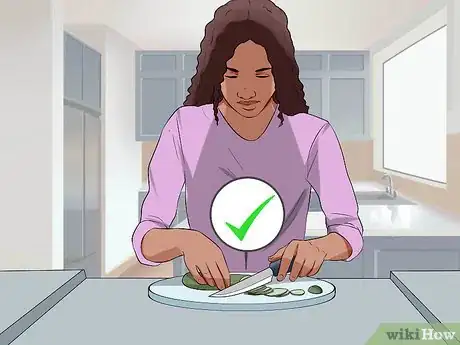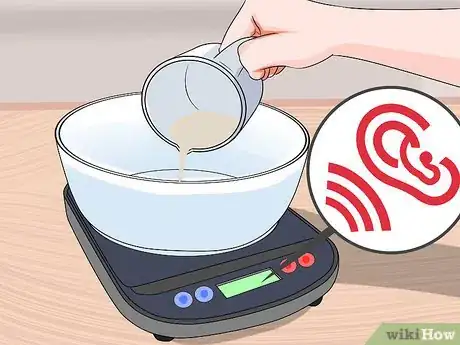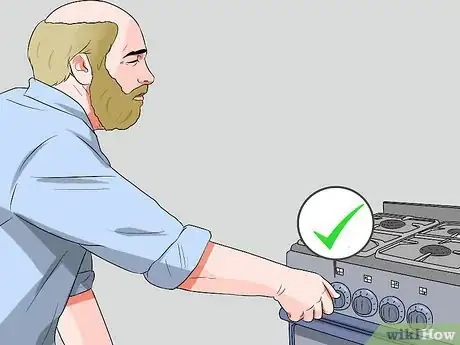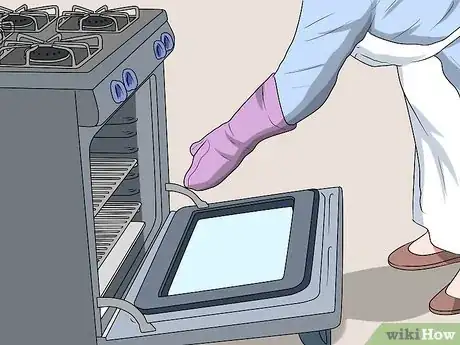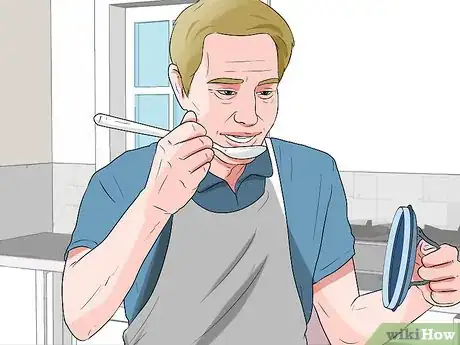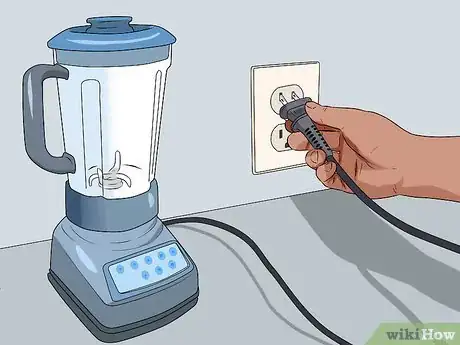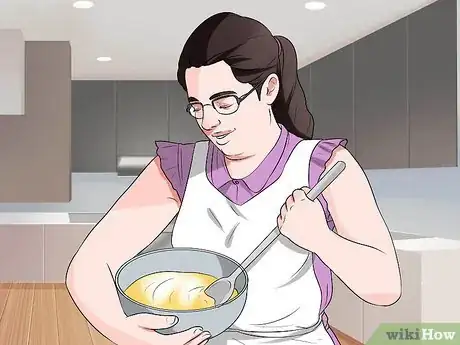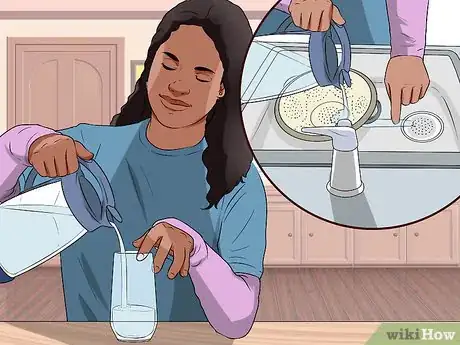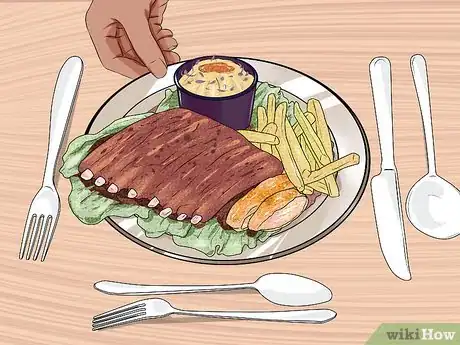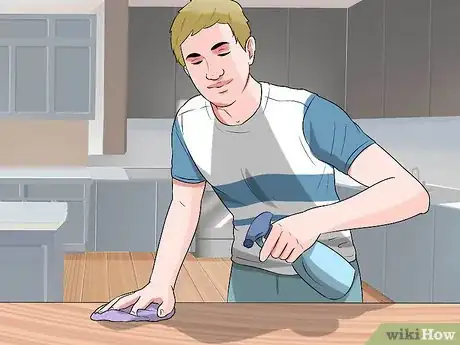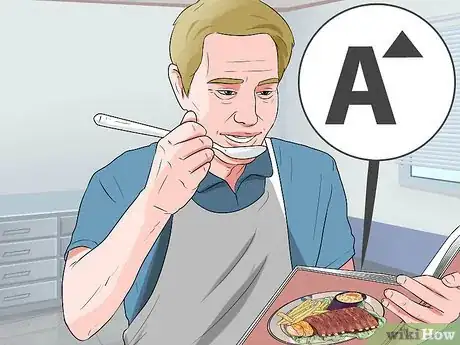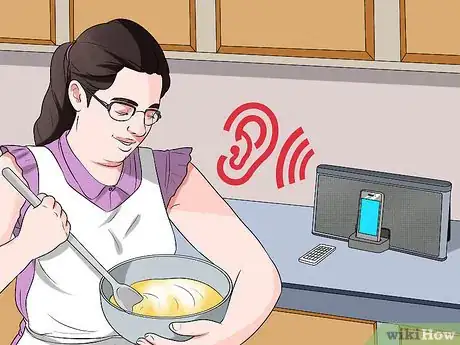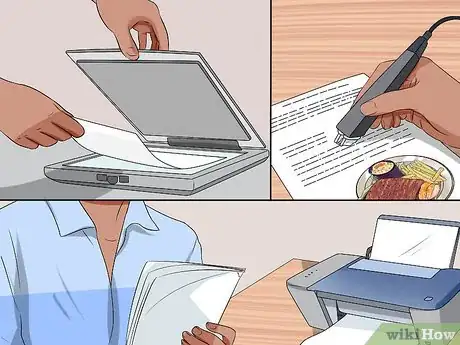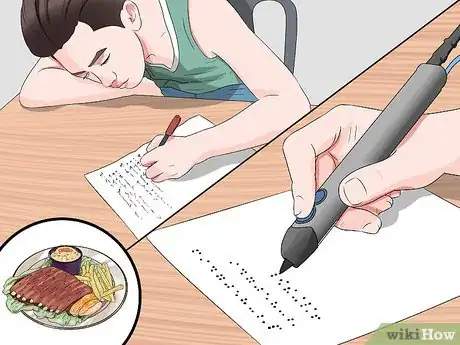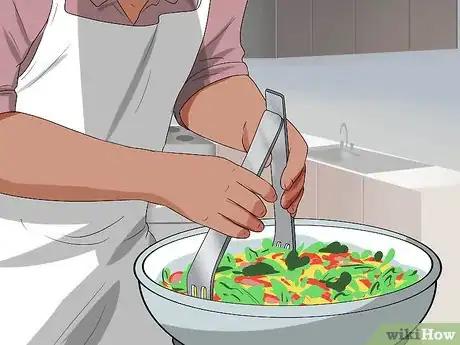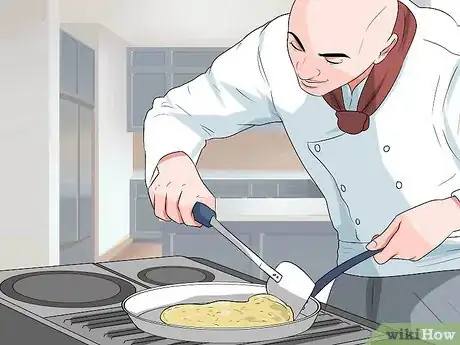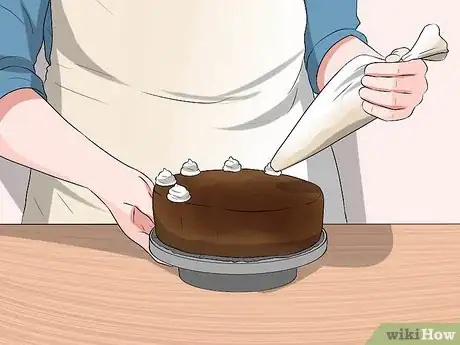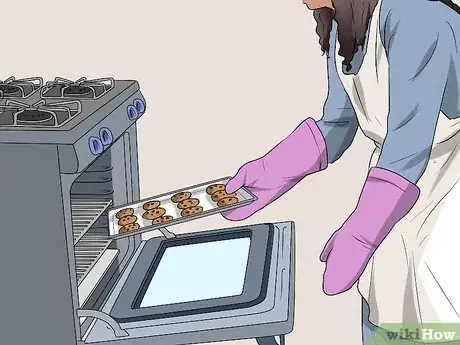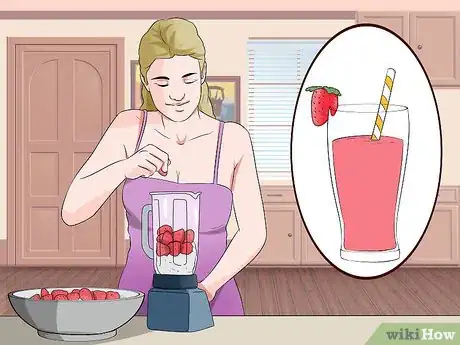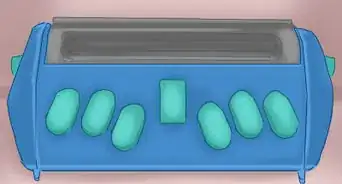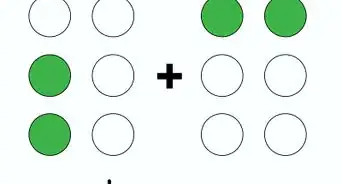wikiHow is a “wiki,” similar to Wikipedia, which means that many of our articles are co-written by multiple authors. To create this article, volunteer authors worked to edit and improve it over time.
This article has been viewed 24,172 times.
Learn more...
Cooking while being blind or visually impaired can definitely be a challenge. Your eyes are constantly guiding you when you cook; from adding pasta to boiling water, to chopping carrots on a cutting board, to baking a cake in the oven. It takes a lot capability, patience, alertness, and a love of food to cook without always depending on your eyes. While there will always be many challenges, recipes, and different kitchen activities you will find difficult, this article will try to bring up some important tips and topics to make cooking a little more trouble-free for you.
Steps
Learning Basic Cooking Skills
-
1Know how to work with knives. There is nothing different when working with knives if you are blind or visually impaired; you will just have to be more alert and know a bit of basic knife safety. Ensure your knives are very sharp so that slicing and chopping will be easy and will not take too much pressure to do. If you are a beginner who has absolutely no experience in using a knife, you may find it easier to cut downward toward on a cutting board. Not only is it easier, but it's also much safer. Keep one hand holding on the food and another chopping. Always move your fingers when slicing to avoid getting cut.
- Use vegetable peelers instead of knives when trying to peel vegetables or fruits.
- An advanced and experienced cook is able to cut in different various positions, but a newly blind person who is experienced with cooking will probably never change his ways of cutting with a knife.
-
2Know how to measure ingredients. Consider getting yourself a talking kitchen scale that talks so you can weigh ingredients in pounds, ounces, and grams. When measuring large amounts that are ¼ cup or more, keep a 'spill pan' underneath your measuring cup. Place a small baking tray under your measuring cup. If you over-fill it, you can pour the excess ingredients back into the cup. For ingredients that are smaller in amount (e.g. teaspoons or tablespoons), have a bowl underneath while you are pouring your ingredients into the spoon.
- If you are visually impaired, consider finding various measuring spoons and cups that have large print for you to be able to cook. You can also mark the measuring cup using a strong, bold marker (e.g. 3-D pen).
Advertisement -
3Know how to use a stovetop. For the blind, it's best to use a gas stove, because they are easy to switch on and you can hear it light up. Always place the pan on the burner before turning the heat on. You must gain awareness where your pan is on the the burner. Ensure you place it on the center - it's quite easy for the pan to move around.
- If needed, place your hand at a safe distance above the burner to check if it's still on and burning.
-
4Know how to use an oven. While the thought of using an oven without seeing might terrify you at first, there is nothing quite different except following a couple safety precautions. If you are beginner cook, practice using the oven when it's cold and not on. Once you gain confidence and understand the process, use the oven when it's on and hot. It's easier to pull out the oven tray when placing food in to cook. When removing food from the oven, pull out the oven tray and find the pan to remove it. That way you don't have to reach too far to find your food, and the chance of burning your hand is less likely to happen.
- Always wear long oven mitts when handling hot food and dealing with the oven to protect your hands.
- Ensure the oven shelves are secured tightly so they don't fall off when placing or removing food from the oven.
-
5Know how to test if your food is cooked. One of the most basic ways to test if your food is done is by tasting and trying it. For baked foods such as cakes or brownies, poke a toothpick in the food. Feel the toothpick to determine if it's ready or not: a wet toothpick means the food still needs to bake, and a dry toothpick means it's ready to be removed. For foods you can't poke a toothpick in, press firmly but carefully on the surface of the food to feel its texture and consistency.
-
6Know how to plug in an appliance. Trying to plug in appliances like blenders, waffle makers, toasters, or coffee makers can be slightly tricky and risky without the ability to see. First, try to detect the outlet and observe the position of the two holes. Have your right hand hold the plug by the portion. Slowly bring the plug up to the outlet, but do not begin to push it in. Check your left hand to ensure that the prongs are in the exact position as the holes. Remove and let go of your left hand. Ensure that your right hand is touching the portion of the plug. Then you can push the plug into the outlet.
-
7Know how to mix. Whenever you mix, always have a baking tray underneath the bowl to prevent spills and messes. Always try to mix in circular motions. For foods like cake batter or brownie mix, try feeling the mix with your fingers to identify if you can feel flour streaks or bumps. If you don't feel any dry ingredients, stop mixing to avoid over-blending. When mixing basic foods like salads, mix until the ingredients feel well-combined.
-
8Know how to pour and drain. When pouring a liquid into a glass, use one hand to hold on the pitcher and another to place your finger over the edge of the glass. Your finger will help you indicate when the glass is almost full. When draining, place your colander in the sink and use your hand to identify where it is before draining.
- When pouring liquids, you may also notice a sound change when the liquid reaches the top.
-
9Know how to serve the food. Serving your food with a fancy look is pretty hard to do if you're blind or visually impaired. If you are hosting a dinner party, it's best to have your sighted guests serve themselves. When serving your own food, try to keep the foods separate (e.g. vegetables on one side, meat on one side, etc.).
- To set the table evenly with plates and utensils, push each chair in its proper area. That way you can center each plate and utensil in front of the corresponding chair.
-
10Know how to clean up. To wash dishes, try rinsing the dishes and placing them in a dishwasher for easier washing. Use a rag to wipe the kitchen counter and floors. Leftovers should be stored in air-tight containers and then placed in the fridge. Everything in your kitchen should be organized. Ensure you place everything back where it belongs, as finding something that was misplaced is very hard when you can't see well.
Saving and Organizing Recipes
-
1Find braille cookbooks or cookbooks in large font. Thankfully in this age of century, many braille cookbooks have been published for the blind and large font cookbooks for the visually impaired to use. The recipes are very helpful to go back and forth while cooking. Save these cookbooks in a place where you will be able to use and reach them when you want to cook such as a bookshelf.
-
2Find voice-activated recipes. Try to look for recipes that are by voice instead of words such as cassette tapes or CDs. You can save them on a computer and place them in a file. Use them until it's time to cook.
-
3Scan the index of a cookbook and have it perform optical character recognition. Use a flat-bed scanner to scan the picture of the index. Use the program that performs optical character recognition (i.e OCR). This program helps convert the images of the index into a computer file. In the file, it contains the numbers, characters, and punctuation of the recipes.
- Unfortunately, OCR is not always accurate and correct, especially in the ingredients list. You may have to correct the recipe yourself.
-
4Write down recipes yourself and keep them. If you are an advanced cook and know a handful of recipes, try writing them down and saving them. You can choose to use a braille typewriter or write in braille using a piece of paper. If you are visually impaired use a bold marker such as a 3-D pen when writing down your recipes, or use large font when writing them out on a computer.
Making Basic Recipes
-
1Make a salad. Salads are a great way to practice your chopping skills and are very simple to make. While there are many salads to try from, consider making a fruit salad, a garden salad, or a Caesar salad. If you want to try something a little advanced or new consider making a tuna salad or an egg salad.
-
2Make scrambled eggs. Another simple recipe, this time requiring you to make it on your stovetop. When you think you've got the hang of it, try adding it to a breakfast burrito.
-
3Make a sandwich. Sandwiches are easy to make and are perfect if you are a beginner chef. Try starting off with a peanut butter and jelly sandwich or a tuna sandwich.
-
4Bake a cake. Cakes are one of the best ways to practice using the oven, especially if you are a beginner cook. Some of the basic recipes like making a vanilla cake are very straightforward and mouthwatering.
-
5Make chocolate chip cookies. Chocolate chip cookies are a very popular recipe and dessert. Hundreds of people around the world enjoy these sweet, effortless cookies. This is another recipe to get a more of a hands-on practice with the oven.
-
6Make a smoothie. Smoothies are delicious drinks to enjoy anytime and are super swift to make. Smoothies usually consist of fruit, juice, sugar, honey, yogurt, and sometimes vegetables. Consider trying a milkshake as well.
-
7Make spaghetti. Spaghetti is a very well-liked meal and is perfect for beginner chefs to make when preparing their first meals. If you want to get a little advanced, add meatballs on top.
Warnings
- Ensure all your kitchen appliances are working well and can be used. If not, you could seriously injure yourself.⧼thumbs_response⧽
- Ensure the handles of the pots and pans are turned around, so you don't erroneously knock them over while you are cooking.⧼thumbs_response⧽
- For someone with neuropathy, which is the loss of sensitivity in the fingertips, pouring hot liquids can be dangerous. It's best to use an electronic liquid-level indicator, such as the device "Say When".⧼thumbs_response⧽
- Avoid wearing long, loose clothing while cooking. You could accidentally set your clothes on fire.⧼thumbs_response⧽
- Always wear long oven mitts when removing food from an oven to guarantee safety to your hands.⧼thumbs_response⧽
- Always shut down the oven and stove when removing food from the heat.⧼thumbs_response⧽
- Never store spices or ingredients above a stove.⧼thumbs_response⧽
- Avoid having pets in with you while you are cooking. You won't be able to see them and they may be able to distract you while you are doing something that requires focus (e.g. cutting vegetables, using an oven, grating cheese, etc).⧼thumbs_response⧽
